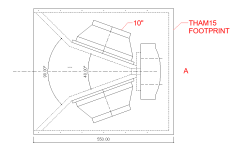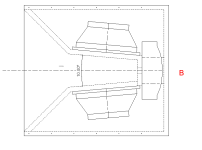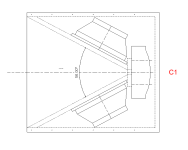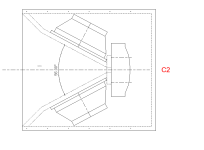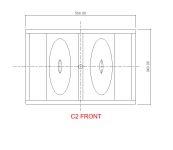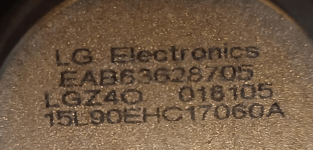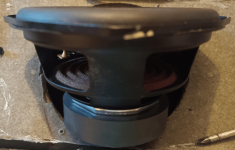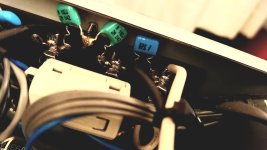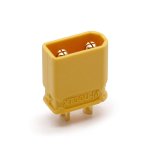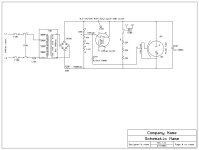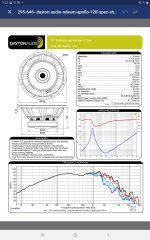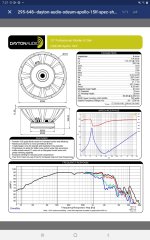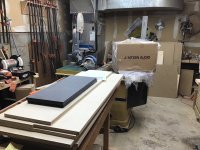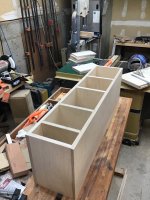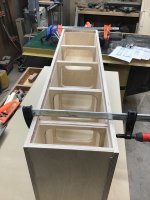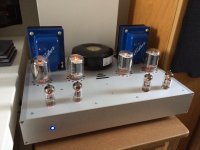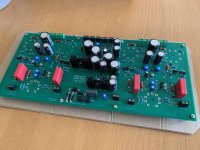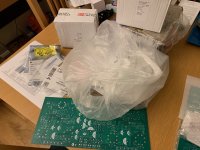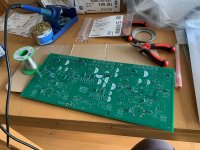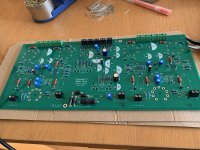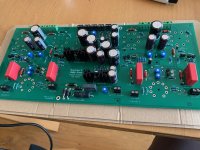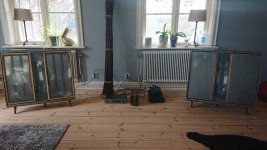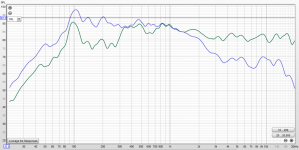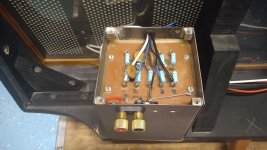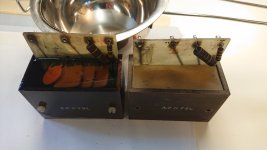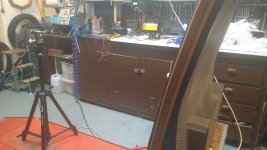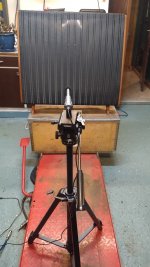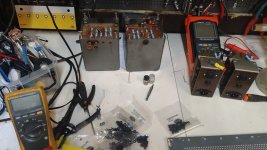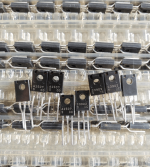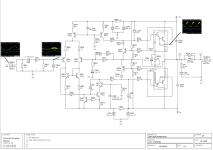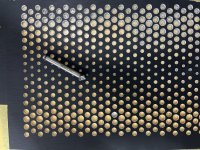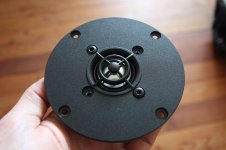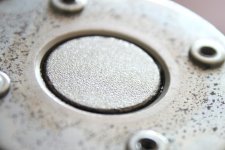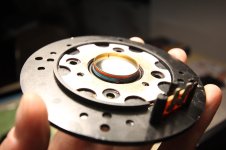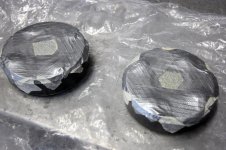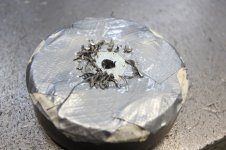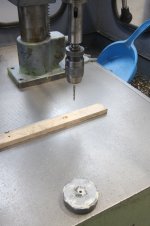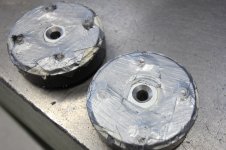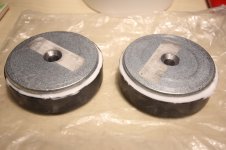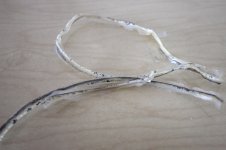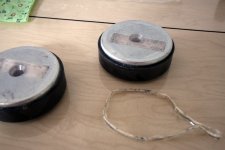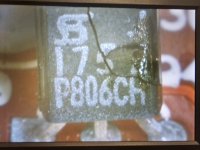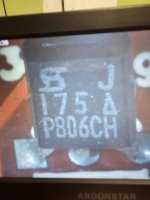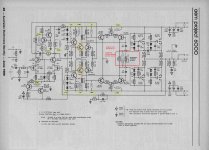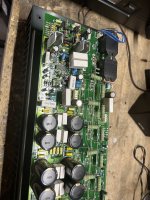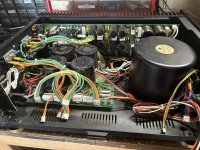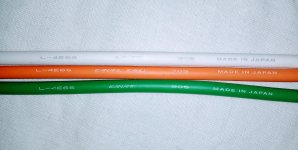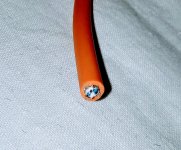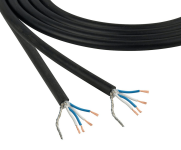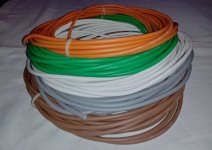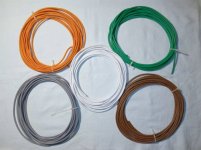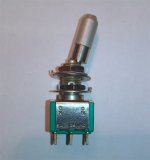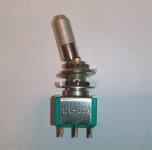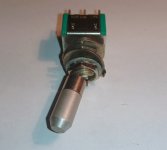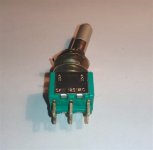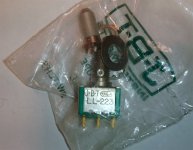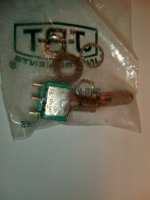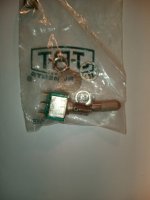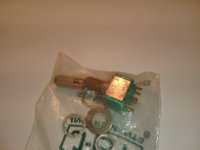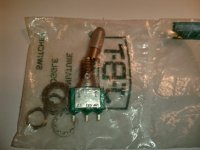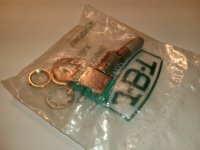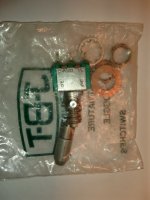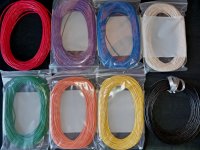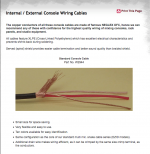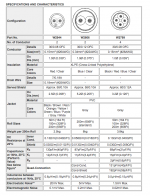I had a great opportunity this week (thanks to Chris at Solen): Side-to-side comparison with 3 of the greatest tweeters on the planet, from the Serbian company RAAL:
.: The super efficient 210-10D ''Lazy ribbon''
.: The renowned 140-15DAM (amorphous core version)
.: and the not-available-to-public 70-20XR
Over the years i had the chance to play, test and listen to each of them for many hours, but i never had the opportunity to make a comparison test, side-to-side, using the very same system and room and keeping the memory fresh with same music excerpts.
So, here it is.
As you can see, i added a little intruder: a ''value'' tweeter, the surprising Airborne RT-4001... just to have a ''non-Raal'' driver as a reference...
Before i start, here is a quick presentation of the system: it's an active 4-way that uses DEQX preamp/DSP/xover + ICEpower amplifiers + macMini/itunes music server that feeds digitally the DEQX. Other drivers are: (4) JL audio 10w7 + (2) Volt midbass + (2) Voxativ AC-1.6.
EQ calibration made from the listening seat, distance of 4.8 meters and about 8 deg off-axis using Earthworks M50 calibrated mic.
The Voxativ was the perfect midrange for this test because it's a fullrange/wideband that is really at ease with pretty much any highpass xover point i had to try...
First, i did a little test to see what they have in the belly, their comfort zone, their natural in-room frequency response. For that, i made a DEQX highpass setting of 1000hz with very steep 162db/octave linear phase.
Then, based on the results, i made other DEQX configurations, EQ'd the FR and listened to each of them. I kept the EQing very light so the real sonic signature of each tweeters stays realistic.
Most of the time it was with a 300db/oct slope linear phase, so if you're using passive set-up your results/conclusions may be different than mine, but i think, overall, it gives a good idea of each drivers. It's subjective, of course, but i'll do my best to stay objective ;-)
AIRBORNE RT-4001
Lower Frequencies: 7.0/10
Higher Frequencies: 6.5/10
Micro/Macro dynamics: 6.5/10
3D feeling and Texture: 7.0/10
Transparency: 7.5/10
Ease of integration: 7.5/10
CONCLUSIONS: The overall performance of this inexpensive tweeter is very good. In fact, it's surprising how good it performs in this somewhat unfair comparison. Comfort zone from 2,5khz up to 14khz... FR not too bumpy... handles well the EQ corrections... Not a lot of energy but very decent... a little ''sssssss'' sonic signature that reminds us we have tweeters in the systems, but i've seen a lot worst.
----------------------------------------------------------
RAAL 140-15DAM
Lower Frequencies: 9.0/10
Higher Frequencies: 8.5/10
Micro/Macro dynamics: 8.5/10
3D feeling and Texture: 8.5/10
Transparency: 9.5/10
Ease of integration: 9.5/10
CONCLUSIONS: Considered by many as THE best tweeter in the world, i have to admit this one has no weakness. Like.. at all. It's, by far, the most well-balanced high-frequency driver i heard in my life so far. It disappear completely while keeping the razor sharp resolution you expect... natural FR is excellent... handles EQ correction like a champ... Comfort zone 1.6khz - 20khz+ makes it very easy to match with almost any midrange driver.
----------------------------------------------------------
RAAL 70-20D
Lower Frequencies: 9.5/10
Higher Frequencies: 8.0/10
Micro/Macro dynamics: 8.0/10
3D feeling and Texture: 8.5/10
Transparency: 9.5/10
Ease of integration: 9.0/10
CONCLUSIONS: Rumor was floatting about this not-available to public driver that it could beat his mighty brothers... Well, i wouldnt say that but some might find it indeed better, in some ways... Comfort zone 1.6khz - 10khz with a surprising roll-off smoothly starting from 8khz, that is the ribbon tweeter that sounds the least like a ribbon tweeter. Very ''domish'' sonic signature, if i may say. Would probably compete well against high-end domes such as the big Scan-speak and such. Because of his discreet high frequencies, it's very transparent while keeping a very good resolution feeling. High frequencies
are there, but never annoying. Lower frequencies (+/- 1.6khz-5khz) is on par with the 140-15D or even better.
----------------------------------------------------------
RAAL 210-10D
Lower Frequencies: 5.5/10
Higher Frequencies: 9.5/10
Micro/Macro dynamics: 9.5/10
3D feeling and Texture: 9.0/10
Transparency: 9.0/10
Ease of integration: 4.5/10
CONCLUSIONS: As you can see, that's a wild one. Comfort zone from 3.8khz (and more likely 5 or 6khz) One of the most painful driver i had to integrate. Bumpy FR and limited bandwith. Nasty peak between 12khz and 17khz, dip at 7khz, another peak at 4khz... Not to mention the laser-narrow directivity. Doesnt look like i appreciate it very much, is it ? Well, on the contrary. With the right mid (which i have) you can take a chance with this stallion. The micro dynamics are out of this world, you have a 3D feels that add depth in almost every music you listen to... More resolution, more texture, more audio porn. Like a marriage with a Victoria secret's model, it might very well end up in a divorce, but you may also enjoy the ride.
-----------------------------------------
Unfortunately, no clear winner. It really depends of your needs and tastes. But i think that's some good information to start with, i hope it can help a little...
Next: i may try the Beyma tweeters
🙂
Jon
P.S. all drivers specs are available on the new Solen website:
Home | Solen Electronique - World leading producer of high-end crossover components
-------------------------------------------------------------------------------
***EDIT ADD-ON 24 december 2016***
-------------------------------------------------------------------------------
BEYMA TPL 150 H
Lower Frequencies: 7.5/10*
Higher Frequencies: 6.0/10
Micro/Macro dynamics: 7.5/10
3D feeling and Texture: 7.0/10
Transparency: 8.0/10
Ease of integration: 8.5/10
CONCLUSIONS: A bit of a disappointment, i must say. Not a bad tweeter at all, just not as good as a 4in. diaphragm compression in the mid-hi region, and surely not able to compete in the last 2 octaves against the RAAL ribbons. On the other hand they are quite efficient, you can cross it low, they don't have any obvious flaws, they are pretty good jack-of-all-trades performers and probably more interesting than most of the dome technology tweeters there is.
*didn't try lower crossover point than 2.2khz and without a proper installation on a baffle, so the lower-frequencies (1khz-4khz) was not properly tested and mainly just compared to the Radian 950BPbe's midrange performance in that bandwith (in which the Beyma completely lost in comparison).
